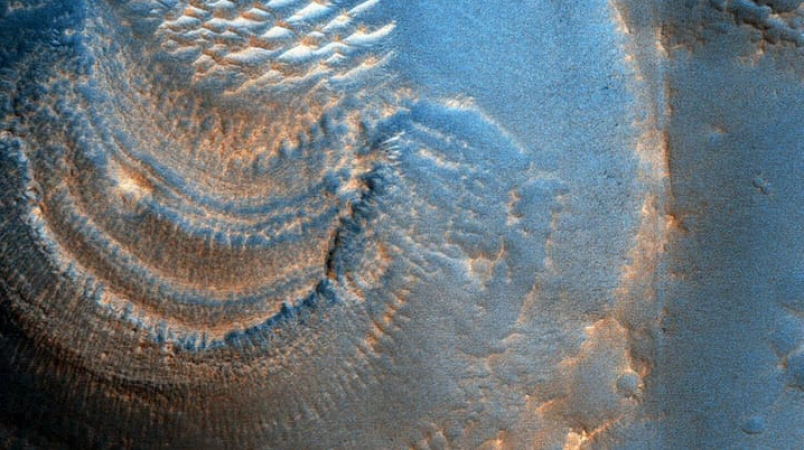
USA: Arabia Terra, a region found in the northern regions of the red planet, has been photographed by NASA's Mars Reconnaissance Orbiter and shows mysterious crater deposits. These craters are said to contain "curious deposits with strange shapes and distribution," according to the image. This image was captured by the Orbiter's HiRISE (High-Resolution Imaging Science Experiment) camera at a height of 294.6 kilometres.
The most potent camera ever flown on a planetary exploration mission is aboard the Mars Reconnaissance Orbiter, which was launched in August 2005. Its main goal is to provide future missions with a map of the Martian surface.
Additionally, it has been searching for evidence of water and gathering data on the climatic conditions on the red planet.
Also Read: Leaked Product Roadmap for the Next Three Years for Google Pixel 7a, Pixel Fold, Pixel 8 Series
According to Paul Geissler, a researcher from the University of Arizona, "the deposits have horizontal laminations that could be layers or terraces." Researchers at this university operate the HiRise camera.
The deposits were found in craters that are wider than 600 metres, it was found. Smaller craters, 450 metres wide or less, lack these deposits.
Deposits appear exclusively on the south sides of craters 600 metres in diameter or larger. Additionally, small, bright ridges were discovered extending from the deposits.
Also Read: OnePlus 11 is set up to be yet another forgettable Android flagship
After being processed, the image taken by the HiRise camera was used to highlight the features and formations of a crater that contained unusual deposits.
The deposits in the crater may be related to the sublimation of ice-rich material on Mars, which is a process in which a solid material transforms into a gas.
Also Read: Apple will terminate the Dark Sky app on January 1st
According to Geissler, the terraces "might represent various sublimation epochs." It's possible that the larger craters reached a water table 45 to 60 metres below the surface and were flooded after they formed.